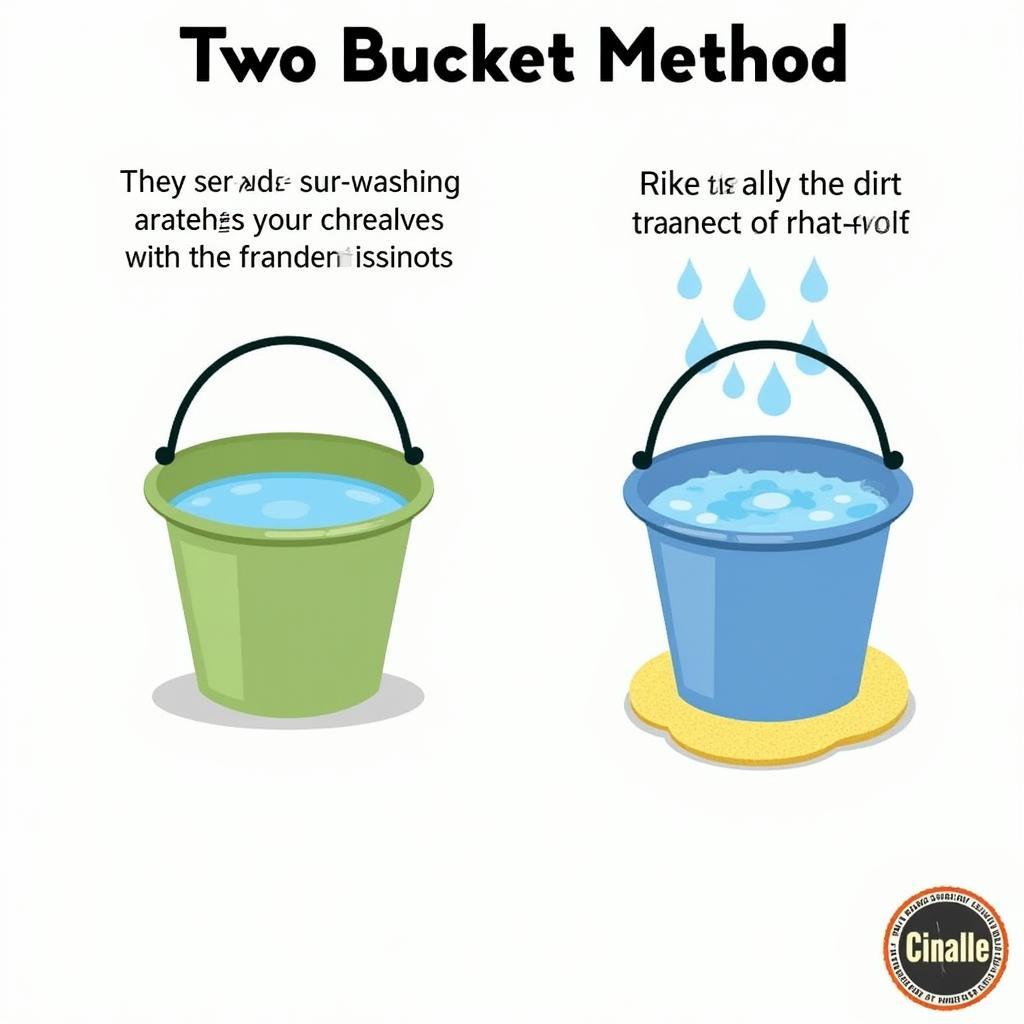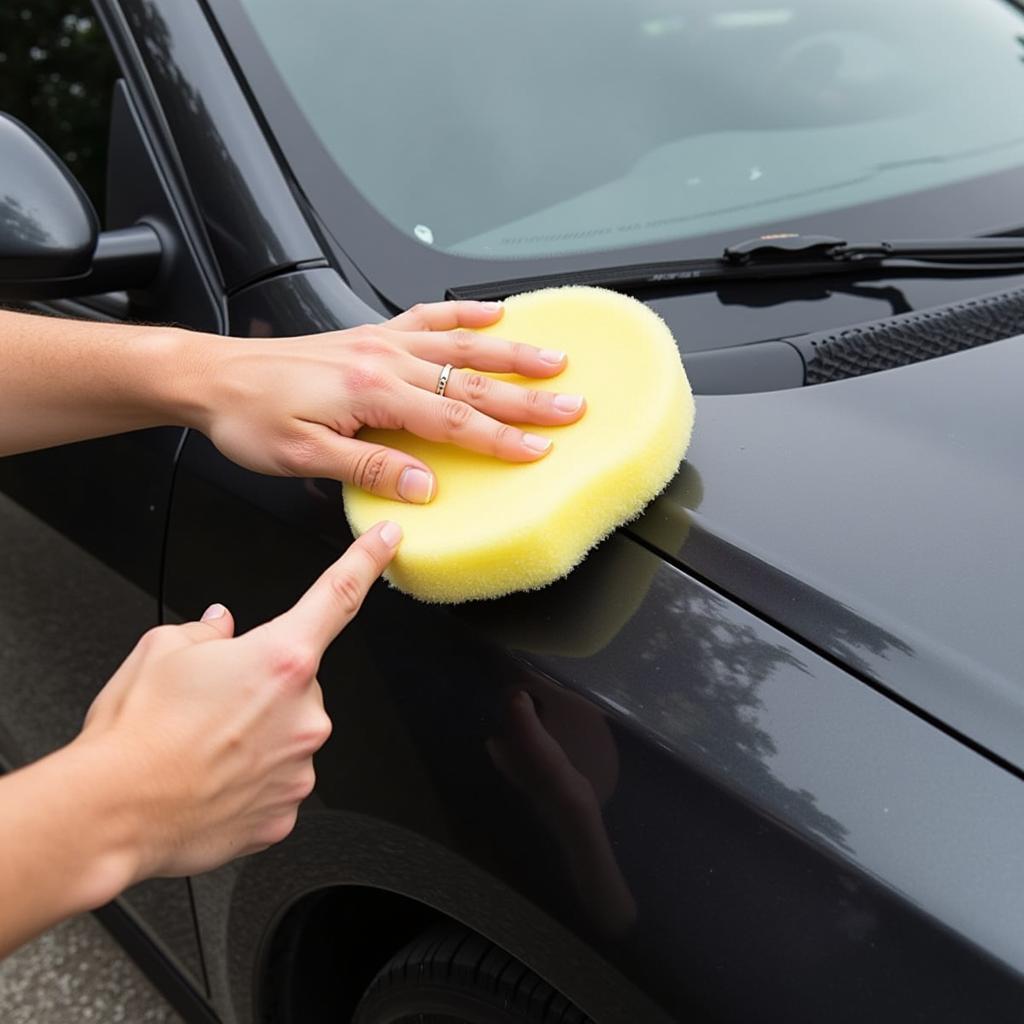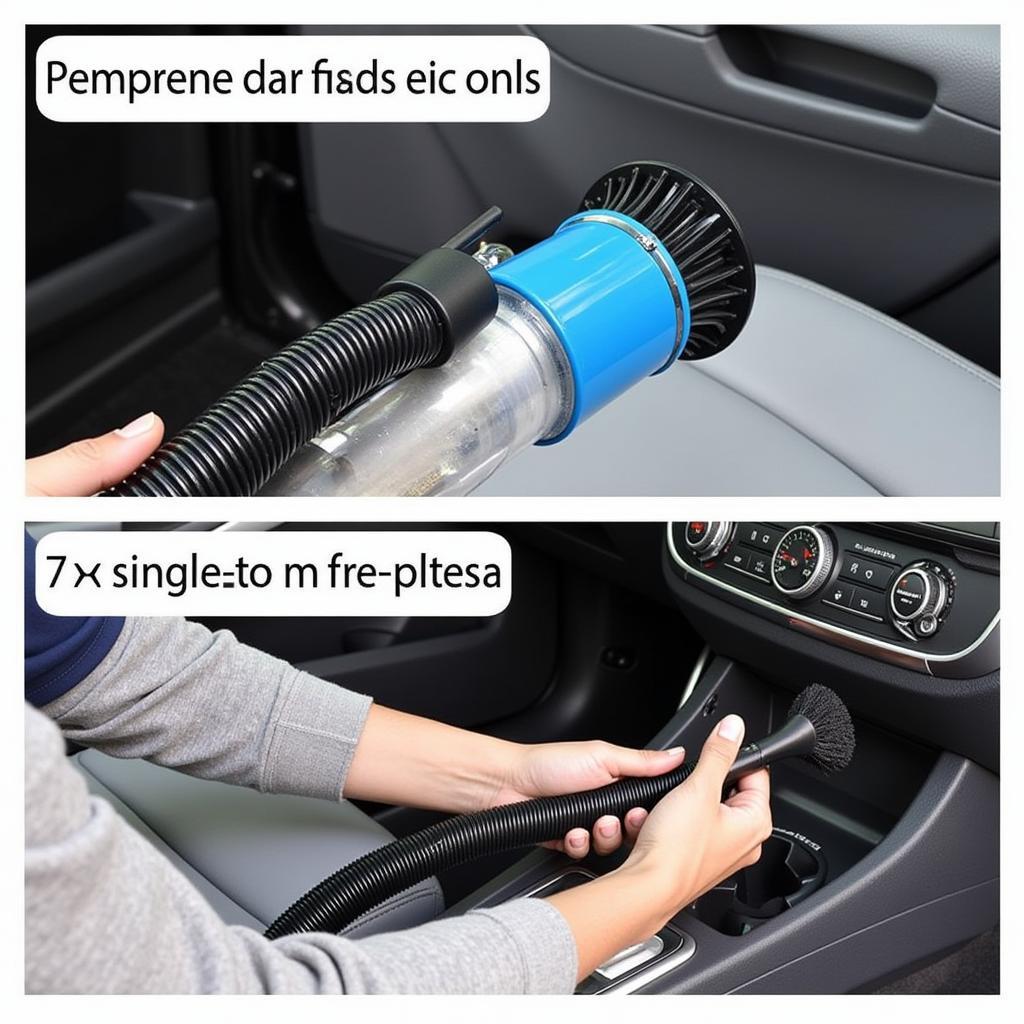Detailing your own car can be a rewarding experience, transforming your vehicle from drab to dazzling. It’s not just about a clean car; it’s about restoring and preserving its beauty, inside and out. This comprehensive guide will provide you with the knowledge and steps to achieve professional-level results in your own driveway.
Getting Started: Essential Tools and Supplies
Before you begin, gather your arsenal of car detailing supplies. This includes wash mitts, microfiber towels, car wash soap, wheel cleaner, tire dressing, interior cleaner, leather conditioner (if applicable), glass cleaner, wax or sealant, and various applicators. Investing in quality products will make a significant difference in the final outcome. Don’t forget essential tools like buckets, a pressure washer (optional but recommended), and a detailing brush.
Having the right tools and products is crucial for a successful detailing job. Using the wrong products can actually damage your car’s paintwork or interior.
 Washing a car using the two-bucket method to prevent scratches.
Washing a car using the two-bucket method to prevent scratches.
Exterior Detailing: Achieving a Showroom Shine
Start by washing your car using the two-bucket method. This prevents swirling and scratching by minimizing the amount of dirt that comes into contact with your paint. Rinse your car thoroughly and then dry it with a high-quality microfiber drying towel.
Next, tackle your wheels and tires. Use a dedicated wheel cleaner and a detailing brush to remove brake dust and grime. After cleaning, apply tire dressing for a rich, black finish. Now, it’s time for the crucial step: decontamination. Use a clay bar or iron remover to remove embedded contaminants that washing alone can’t eliminate. This preps your paint for polishing.
 Applying car wax using an applicator pad to protect and shine the paintwork.
Applying car wax using an applicator pad to protect and shine the paintwork.
Polishing is optional but highly recommended, especially if your paint has swirl marks or minor scratches. This step uses a polishing compound to refine the paint and restore its clarity. Finally, apply a layer of wax or sealant to protect your paint and enhance its shine. This will also make future washes easier.
Interior Detailing: Creating a Pristine Cabin
Start by vacuuming the entire interior, including carpets, seats, and crevices. Use a detailing brush to agitate the carpet fibers and loosen dirt. Clean all surfaces with an appropriate interior cleaner, paying attention to areas like the dashboard, door panels, and center console.
For leather seats, use a dedicated leather cleaner and conditioner to maintain their suppleness and prevent cracking. Clean your windows with a streak-free glass cleaner. Don’t forget to clean the often-neglected areas like the headliner and sun visors. A clean, fresh-smelling interior enhances your driving experience and protects your investment.
Maintaining Your Detail: Preserving the Perfection
Once you’ve detailed your car, regular maintenance will keep it looking its best. Wash your car weekly using the two-bucket method, and apply a quick detailer or spray wax between washes to maintain the shine. Regularly vacuuming and cleaning the interior will prevent dirt buildup.
 Cleaning a car’s interior using a vacuum cleaner and a detailing brush.
Cleaning a car’s interior using a vacuum cleaner and a detailing brush.
Conclusion: Enjoying the Fruits of Your Labor
Learning how to detail your own car not only saves you money but also provides a sense of satisfaction. By following these steps and investing in the right products, you can achieve professional-level results and keep your car looking its best for years to come. So, grab your supplies, put on some music, and enjoy the process of transforming your vehicle!
FAQs
-
How often should I detail my car? A full detail is recommended every 6-12 months, depending on usage and environmental factors.
-
What’s the difference between wax and sealant? Wax provides a warm, deep shine, while sealant offers longer-lasting protection.
-
Do I need a pressure washer? While not essential, a pressure washer makes the washing process faster and more efficient.
-
Can I use household cleaning products on my car’s interior? No, household cleaners can damage delicate automotive materials. Use dedicated car interior cleaners.
-
How do I remove water spots? A dedicated water spot remover or a diluted vinegar solution can help remove water spots.
-
What is the best way to dry my car? Use a high-quality microfiber drying towel to prevent scratching.
-
How can I prevent swirl marks? Use the two-bucket wash method and high-quality microfiber wash mitts.
Expert Advice
Chris Evans, Master Detailer at Evans Auto Detailing: “The key to a great detail is patience and attention to detail. Take your time and focus on each step, and you’ll be amazed at the results.”
Sarah Miller, Automotive Paint Specialist: “Protecting your car’s paint with a wax or sealant is essential to prevent damage from UV rays, environmental contaminants, and everyday wear and tear.”
John Davies, Certified Automotive Technician: “Regular maintenance is crucial to preserving the results of a detail and keeping your car looking its best for years to come.”
Need Help? Contact us via WhatsApp: +1(641)206-8880, Email: [email protected]. Our customer service team is available 24/7.

Leave a Reply